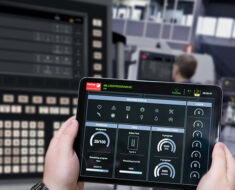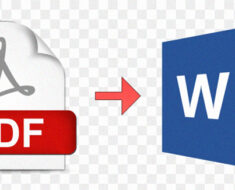
Snappygoat
The scalability and ease of sharing have helped cloud platforms emerge as a significant asset to business organizations. However, cloud security is a significant issue for businesses that have embraced cloud environments and those who want to embrace it.
Although there is continuous improvement in cloud technologies, the state of cloud security is in flux. With the arrival of cloud security posture management, things are expected to change for the better. This article discusses how you can secure multi-cloud environments with CSPM.
What Is a Multi-Cloud Environment?
A multi-cloud environment refers to a flexible micro-service delivery. In this cloud model, businesses use more than one cloud platform to deliver specific services or applications. A multi-cloud environment could include public, private, or hybrid clouds to achieve data center goals.
The increased use of cloud services and the variety of cloud administrative interfaces and consoles leads to more responsibilities for the IT administrator. It can be difficult for the IT team to secure a cloud control plane, including managing services from various cloud platforms. A multi-cloud environment setup could cover a variety of elements.
It would require the IT administrator to lock down cloud management interfaces to prevent misuse. Other critical steps to secure a multi-cloud environment include limited access to users, multi-factor authentication, and limited privileges.
What Is a Cloud Control Plane?
The cloud control plane refers to a collective term used to describe interfaces and consoles. The main idea behind implementing the cloud control plane is to manage layered cloud architecture that supports lifecycle management. The cloud control plane enables businesses to manage a diverse collection of services across many geographical reasons.
What Are Common Issues in Cloud Control Plane Security?
One of the obstacles in managing security in a multi-cloud environment is a wide variety of APIs are running on different cloud platforms. These include command-line interfaces that are made available as IaaS and interfaces associated with Kubernetes.
It is difficult for cloud administrators to manage cloud plane security as the segmentation and network zoning occurs between assets and external networks. Here are some common issues in control plane security.
- The cloud environment is programmable, and it is common to make a mistake in the configuration.
- The cloud environment changes rapidly, and the new changes can be implemented in your cloud account with a few clicks.
- Managing cloud inventory is a significant and challenging task. Though cloud platforms offer flexibility and allow querying of inventory assets, it can be hard for platform-tools to get continuous asset inventory of other platforms. You will need high embedded monitoring to get asset inventory of all cloud platforms in a multi-cloud environment.
How Can Cloud Security Posture Management Help Deal With Control Plane Security Issues?
According to a Gartner security report, CSPM refers to a collection of cloud security tools that monitor the cloud environment for misconfigurations, DevOps integration, and compliance monitoring. It comes with intelligent features like risk assessment, incident response capabilities, and thorough investigation. It also covers improved reporting for the control plane.
These advanced security tools can monitor a range of issues across any cloud environment. They help create policies that allow you to clearly define “desired configuration” or “desired state” for any cloud infrastructure. Besides, these tools can monitor reality to find out what is in place.
Cloud security posture management tools can recognize the following cloud control plane issues.
- It can find out and notify if no encryption is enabled for databases or any cloud storage in your multi-cloud environment.
- It can monitor and report no traffic encryption when sensitive data is transferred in and out of any cloud platform.
- It can report old and stale keys and draw your attention to sound key management.
- It can point out or single out poor identity and access management policies followed by your organization on any cloud platform. It will also draw your attention to implement the principle of least privilege to make cloud platforms secure.
- It can find out privileged accounts on all cloud platforms that do not have multi-factor authentication enabled.
- It can list permissive or open access controls that increase the chances of data breaches.
Key Features of Cloud Security Posture Management Solutions
- The cloud security posture management solutions are configurable and come with remediable capabilities that can be automated. It allows you to discover any issues in a multi-cloud environment and remediates automatically with minimal human intervention.
- The policy engine’s flexibility and granularity allow the security solution to enforce custom policy and rules across a multi-cloud environment.
To sum up, these are some of the ways in which cloud security posture management solutions secure a multi-cloud environment.








































